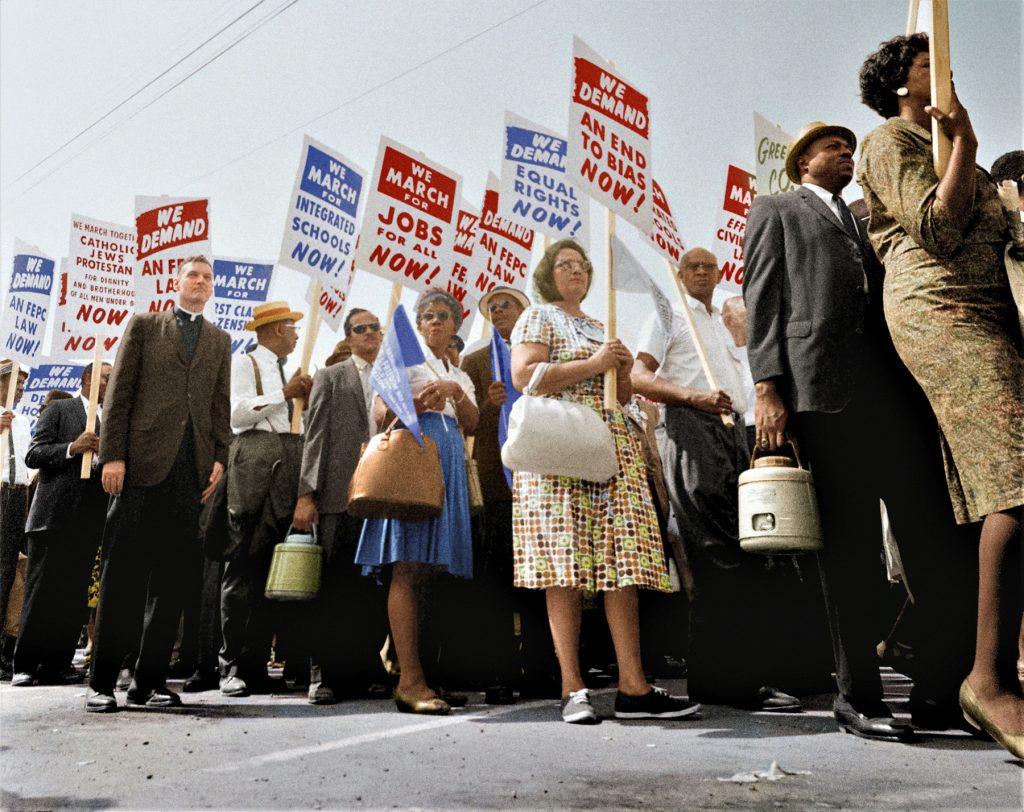By Stacy M. Brown
NNPA Senior National
Correspondent
With Georgia having experienced its second runoff in two years to determine which party represents the state in the U.S. Senate, one irony about the election isn’t lost.
The two candidates, Incumbent Democrat Raphael Warnock and Republican Herschel Walker are both Black.
What makes that ironic is that Georgia’s runoff elections began in 1963 when a segregationist legislator named Denmark Groover earnestly fought to disrupt the power of the Black vote and ensure that a white person would prevail in any closely fought campaign. According to Calif. Institute of Technology Professor and Historian Morgan Kousser, when the race is racially polarized, the runoff requirement makes it more difficult for any minority group to carry enough votes to elect its candidate of choice. Georgia races continue to be racially polarized.
Having served as a state representative in the early 1950s, Groover fell in defeat for election to the House in 1958.

According to the National Park Service (NPS) Archives, the Macon politician blamed his loss on the “Negro bloc voting.”
He carried the white vote, but his opponent triumphed by garnering Black ballots by a five-to-one margin.
“Groover soon devised a way to challenge growing Black political strength,” NPS researchers wrote.
Elected to the House again in 1962, he led the fight to enact a majority vote and runoff rule for all county and state contests in both primary and general elections.
“Until 1963, plurality voting was widely used in Georgia county elections, and the decision on whether to have a majority or plurality was left to the option of each local party executive committee throughout the state,” researchers noted.
Why did Groover propose this significant alteration in January 1963?
Two decades after introducing the majority vote plan, he candidly admitted that in the 1950s and 1960s, “I was a segregationist. I was a county unit man. But if you want to establish if I was racially prejudiced, I was. If you want to establish that some of my political activity was racially motivated, it was.”
At the time of the legislative debate in February 1963, it was extensively reported in the state’s newspapers that Groover and his allies saw the measure “as a means of circumventing what is called the Negro bloc vote.”
NPS said Groover later confirmed that he used the phrase “bloc voting” as a racist euphemism for Negro voting and that he specifically aimed his proposal at Black leaders whom he believed secretly collaborated with white politicians to affect the outcome of elections.
Of Groover, who died in 2001, the New Georgia Encyclopedia states that he was closely involved in several notorious events that still impact state politics.
For example, in 1956, Groover was the house floor leader for Governor Marvin Griffin and helped pass the bill that changed the state flag to include the Confederate battle emblem.
“That change in the flag, Groover acknowledged later, was a defiant response to federal court decisions striking down racially segregated schools,” the encyclopedia stated.
As segregation died out in Georgia, the Confederate flag design became a sore point with Black voters and business leaders.
Governor Zell Miller tried to change the state flag in the early 1990s but could not overcome massive resistance among conservative white lawmakers.
When Governor Roy Barnes made another attempt to change the flag in 2001, he enlisted the support of Groover, who was seventy-eight years old and dying of heart problems, encyclopedia researchers continued.
When legislators introduced a bill to change the flag design, Groover made a dramatic appearance before the House Rules Committee to urge adoption.
“It has become the most divisive issue on the political spectrum and needs to be put to rest,” he said.
“It would bring to an end this cauldron of discord that adversely affects our lives and the future of our children and grandchildren.”
The bill passed, and the flag design was changed, although the resulting controversy would mean Barnes’s defeat when he ran again for governor in 2002.
Groover died less than three months after that last dramatic political appearance in support of a new state flag, on April 18, 2001.




